
| Publisher: | Knopf | |
| Genre: | Women, Family Life, General, Coming of Age, Fiction | |
| ISBN: | 9780525520597 | |
| Pub Date: | June 2020 | |
| Price: | $27.95 |
| Starred | Fiction |
by J. Courtney Sullivan
J. Courtney Sullivan's Friends and Strangers is set in a college town in upstate New York and centers on a pair of Brooklynites who have just relocated with their baby, whose care they entrust part-time to a college student.
The novel's perspective is evenly split between new mom Elisabeth Ronson and college senior Samantha O'Connell, who attends the nearby all-women's school. Sam is Elisabeth's salvation: she provides childcare three days a week, giving Elisabeth, a journalist and an author, time to work. Sam also fills the friendship void created when Elisabeth left Brooklyn. The two women become confidantes, although Elisabeth won't tell even Sam the secret that she's keeping from her husband, Andrew. To prevent her irresponsible sister from accepting money from their wealthy but unscrupulous father, Elisabeth has lent her the cash that she and Andrew have set aside in case nothing comes of the solar-powered grill that he's working on through a fellowship at a local college. Sam could have used that money--she's the first person in her family to attend a private college and realistically anticipates a lifetime of student loan debt.
Friends and Strangers is about whether the unfairness of privilege can ever be sufficiently offset by good deeds. And what of bad deeds: Are they forgiven if they result from good intentions? Sam watches Elisabeth meddle without compunction, but when Sam takes a principled stance at one point, it backfires spectacularly. Sullivan (Saints for All Occasions) massages her themes in scenes as barbed as they are funny, by way of characters as infuriating as they are heartbreaking. --Nell Beram, author and freelance writer

| Publisher: | Ballantine | |
| Genre: | Women, Romantic Comedy, Family Life, Romance, General, Fiction | |
| ISBN: | 9780525577126 | |
| Pub Date: | June 2020 | |
| Price: | $27 |
| Fiction |
by Diksha Basu
What starts as seemingly light reading featuring New York family and friends headed to an Indian wedding morphs into a spectacularly entertaining examination of race, wealth, hybrid identity, family dysfunction and maybe even a love story or five. Living in Mumbai and New York City, Diksha Basu, who used her home city of Delhi to immense success in her 2017 debut, The Windfall, returns with the dazzling Destination Wedding.
Tina Das is still single at 32 and has plateaued at her television producing job, when she attends a cousin's almost week-long nuptial celebration in Delhi. Upon arrival, the extended family is luxuriously accommodated at a posh country club in oversize private cottages with onsite staff, including chauffeured Mercedes. In between mandatory festivities, Tina tries to balance supposed-to-be-maybe-work with Sid, the gorgeous personal trainer from the Mumbai slums she hoped to cast for a series that went awry (who just happens to be in Delhi), and trying not to fall (again) for the charming Australian expat who already dissed her once. What a week this will turn out to be.
Basu, who previously made keeping up with the Joneses Jhas bitingly insightful, gives a similar eyebrow-arch to her characters here. In addition to the main cast, Basu's clever insertions revealing momentary glimpses into the lives of passing strangers--because everyone has a worthy story! Basu balances the haves and have-nots--both socioeconomically and emotionally--with deft assurance and expert timing. Her astute, often scathing, commentaries beneath the irresistible humor transform her fiction into a must-go literary destination. --Terry Hong, Smithsonian BookDragon
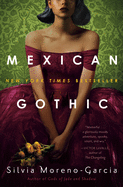
| Publisher: | Del Rey | |
| Genre: | Horror, Magical Realism, Fairy Tales, Folk Tales, Legends & Mythology, Fantasy, General, Gothic, Fiction, Historical | |
| ISBN: | 9780525620785 | |
| Pub Date: | June 2020 | |
| Price: | $27 |
| Mystery & Thriller |
by Silvia Moreno-Garcia
Mexican Canadian Silvia Moreno-Garcia is an award-winning, genre-hopping literary chameleon, having successfully written fantasy, fairy tales, vampiric adventure, noir, short stories. Clearly channeling her inner H.P. Lovecraft in Mexican Gothic, she's created her own varietal of irresistible 1950s fungal horror.
Socialite Noemí is summoned home early from a masquerade by her powerful father. She's shocked to learn her cousin Catalina might be in grave danger: "You have to save me.... Hurry." Recently wed to British heir Virgil, Catalina's pleading missive could just be "a ploy for attention," Noemí's father surmises, but he insists on assurance of her safety. Promised enrollment in a graduate anthropology program at the national university for her intervention, Noemí quickly travels to High Place, a crumbling mansion in a remote village where Catalina lives with Virgil's extended family. The patriarch, Howard, is a dying, eugenics-obsessed racist. Virgil is more creepy than charming. His cousin Florence is cold, but at least her son, Francis, seems willing to engage. Noemí barely sees Catalina because she's allegedly recovering from tuberculosis. And then there's the house. And the fungus. And those mysterious spores invading all the inhabitants. Catalina warned her: ghosts are real. Night and day, Noemí sees too much.
Although the rescue mission initially drags, readers who persist won't be able to leave High Place--caught in a web of mass murder, purified bloodlines, multigenerational incest, casual cannibalism and all manner of mushrooming mayhem. Moreno-Garcia writes with heated abandon, her aplomb occasionally interrupted by anachronistic phrasing ("grown a pair of balls") and she unabashedly overwrites ("mandibular prognathism"). Quibbles aside, Mexican Gothic's fearsome storytelling can't be contained. Transmutation approaches: the horror, the horror awaits. --Terry Hong, Smithsonian BookDragon
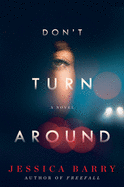
| Publisher: | Harper | |
| Genre: | Women, Crime, General, Suspense, Thrillers, Fiction | |
| ISBN: | 9780062874863 | |
| Pub Date: | June 2020 | |
| Price: | $27.99 |
| Starred | Mystery & Thriller |
by Jessica Barry
Jessica Barry's heart-pounding Don't Turn Around begins at midnight, with a young woman, Cait, waiting in a beat-up Jeep outside "a McMansion" in Lubbock, Tex. The engine is idling, ready for a quick getaway. The house remains quiet, though, and Cait is getting nervous. She can wait for only a few more minutes, since she's under strict orders to avoid attracting attention. Almost at the last minute, a stranger comes out of the house, jumps into the Jeep, and the two women are off, on a 322-mile trip to Albuquerque, N.Mex.
Cait tells her passenger, Rebecca, to switch off her phone so they can't be tracked. But someone finds them anyway. Along dark, deserted roads, a truck with menacing headlights and tinted windows keeps showing up to terrorize the women. The driver's identity remains unknown, but Cait and Rebecca each has good reason to believe the stalker is after her. Neither is certain they'll reach their destination--or survive the night.
Barry (Freefall) excels at plunging readers into her novels from the very start. The thriller races along like the Jeep being chased, while Barry takes her time revealing her secrets, which are surprising and sometimes heartbreaking. The cover tag line is "It's never been so dangerous to be a woman," and Barry precisely taps into timely issues that will resonate with readers, especially female ones. The author also shows how people without obvious common ground could be allies, and those who do bad things aren't monsters lurking in the dark but the seemingly nice folks standing right in the light. --Elyse Dinh-McCrillis, blogger at Pop Culture Nerd
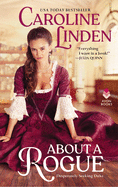
| Publisher: | Avon | |
| Genre: | Women, Historical - Regency, Historical - General, Romance, Fiction | |
| ISBN: | 9780062913623 | |
| Pub Date: | June 2020 | |
| Price: | $7.99 |
| Romance |
by Caroline Linden
About a Rogue, the intriguing first entry in the Desperately Seeking Duke series from author Caroline Linden (Love and Other Scandals) stars a rake and an independent woman joined in an arranged marriage. And their unusual setting is a fascinating window into England's renowned porcelain and pottery industry.
Sophisticated London gentleman Maximilian St. James is more interested in partnership in the family pottery business than a proposed marriage to Bianca Tate's older sister. When Bianca aids her sister's elopement with another suitor, her infuriated father demands Bianca fulfill the agreement and marry Maximilian herself. Angry, she expects at best a chaste, cordial marriage and a handsome, indolent husband. Max, however, intends to be fully involved in running the prosperous pottery company, with brilliant, innovative business ideas, as well as seducing his new wife.
Neither Bianca nor Maximilian expected to find love in their marriage of inconvenience; fate, on the other hand, has other plans. Proximity, physical attraction and genuine affection soon erase annoyance at their situation. Unfortunately, Maximilian has led a checkered life and is acquainted with some very shady characters. When one of those individuals threatens the security of his newfound family, Maximilian must meet danger with shrewdness and courage. Failure will destroy the woman he's grown to love, an outcome he refuses to accept.
Readers will love this fresh take on a classic plot. The distinctive setting and engaging characters are delightful while the Taming of the Shrew aspects of Bianca and Maximilian's relationship provide tart, insightful dialogue. --Lois Faye Dyer, writer and reviewer
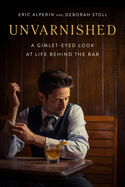
| Publisher: | Harper Wave | |
| Genre: | Biography & Autobiography, Industries, Cooking, Hospitality, Travel & Tourism, Culinary, Business & Economics, Alcoholic - Bartending & Cocktails, Beverages, Essays & Narratives | |
| ISBN: | 9780062899286 | |
| Pub Date: | June 2020 | |
| Price: | $27.99 |
| Biography & Memoir |
by Eric Alperin, Deborah Stoll
In Unvarnished, Eric Alperin shares how his life changed when he walked into Milk & Honey, a classic cocktail bar in New York City run by Sasha Petraske, who's credited with inventing modern cocktail culture. Alperin was an actor; after receiving his MFA but having no plan or money, he got his bartending diploma and became a "double threat." He eventually realized he had "every applicable neurosis" for bar work. People think he's a junkie, but he's really just a dyslexic who requires stimulation and organization, which he finds to the extreme behind the bar. The actor found the stage of a lifetime, a play that never stops.
Alperin fell hard, diving into all aspects of the trade. Alperin and Petraske eventually teamed up to open The Varnish in Los Angeles, hoping to create a port in a storm, to comfort and mend, celebrate and serve. A place that locals and travelers alike thought of as home, gifted with the "intangible third rail of love."
Part memoir, part bar story and part captivating instructional, Unvarnished is a love story to the cocktail, its culture and those who foster it, Petraske in particular. Alperin's exquisite descriptions of bars, tool setups and mixing will have cocktail enthusiasts salivating. Newcomers will be eager to learn details they never imagined, such as the section on ice (the "bartender's flame," harvested from blocks in techniques dating back to 1800), that shows it's the little things that support a beautiful symphony. --Lauren O'Brien of Malcolm Avenue Review
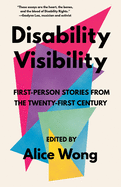
| Publisher: | Vintage | |
| Genre: | Biography & Autobiography, People with Disabilities, Literary Collections, Social Science, Essays | |
| ISBN: | 9781984899422 | |
| Pub Date: | June 2020 | |
| Price: | $16.95 |
| Biography & Memoir |
by Alice Wong, editor
Disability Visibility: First-Person Stories from the 21st Century, edited by Alice Wong, expands on contemporary disabled narratives with the voices of talented writers, activists and professionals from across the disability spectrum. It is a raw, emotional collection, an investment in the power of storytelling to foster vibrant connections and an unapologetic rejection of "internalized ableism," the belief that one would be a better person if not disabled.
Wong, an activist and media maker, began advocating for herself as a person with a disability at a young age. She founded the Disability Visibility Project and partnered with StoryCorps to document the experiences of her peers. Wong places a high value on power of community, and with Disability Visibility she creates a literary space for members of her community to share uncensored accounts of their lives, both the difficult times and the joyous ones.
Contributors include emerging writers as well as those whose names have long been associated with disability justice. Comedian Maysoon Zayid discusses her comedy tour, "The Muslims Are Coming," and how cerebral palsy affects her ability to practice her religion. Eugene Grant writes about how good it felt to discover a powerful historical figure who, like him, has dwarfism. In an especially poignant story, June Eric-Udorie explains why her "dancing eyes" made her feel like a piece of clockwork waiting to be fixed.
Commemorating the 30th anniversary of the Americans with Disability Act, the 37 powerful stories in Disability Visibility reveal the depth of everyday courage and the extraordinary human capacity to find humor in the face of life's adversities. --Shahina Piyarali, writer and reviewer

| Publisher: | The New Press | |
| Genre: | American Government, Political Process, Political Advocacy, Political, Philosophy, Political Science | |
| ISBN: | 9781620971437 | |
| Pub Date: | June 2020 | |
| Price: | $27.99 |
| Political Science |
by Pramila Jayapal
When Pramila Jayapal came to the U.S. at age 16 to attend university, she never imagined she'd one day serve in Congress. But in 2016, Jayapal, a long-time community organizer in the Seattle area and a former Washington State senator, was elected to the House of Representatives just as Donald Trump was elected president. In her second book, Use the Power You Have, Jayapal (Pilgrimage to India) shares her story as an immigrant, an organizer, a mother and a passionate advocate for equality and political change. "Politics at its best," she says, "has human stories at its heart, and logic and methodology in its bones." Both Jayapal's political career and her book--wise, thoughtful and meticulously well-organized--use that same combination of humanity and logical argument to stunning effect.
Jayapal begins by detailing her journey as a young immigrant and her early career bouncing between investment banking and nonprofit work. She then recounts the lessons of her first several political campaigns in Washington, and the transition from being on the outside (as an activist and agitator) to working for change from the inside (as a state senator).
The second part of her book lays out her "moral visions" on three key issues: U.S. immigration policy, Medicare for All and a $15 minimum wage. (Jayapal was part of the coalition that helped pass Seattle's $15 minimum wage in 2014.) The book is both an unusual insider's account of Trump-era politics in D.C. (including Jayapal's relationships with other Democratic leaders) and a fierce call for all citizens, no matter their roles in society, to use the power they have. --Katie Noah Gibson, blogger at Cakes, Tea and Dreams

| Publisher: | Algonquin | |
| Genre: | Biography & Autobiography, American Government, Women in Politics, Personal Memoirs, Local, Political, Civics & Citizenship, Political Science | |
| ISBN: | 9781616208516 | |
| Pub Date: | June 2020 | |
| Price: | $25.95 |
| Political Science |
by Heather Lende
When Heather Lende (If You Lived Here, I'd Know Your Name; Find the Good) decides to run for a borough assembly seat in her hometown of Haines, Alaska, she jumps into local politics with the same delightful zest and enthusiasm that characterize her writing in Of Bears and Ballots. She's lived in this small town for almost 30 years, she's written three popular books about it. She knows most of the 1,600 residents and has written obituaries about her friends and neighbors for the local paper since 1997. Her goal is to be a politician who says "Why not? We can try that. Let's listen."
Unfortunately, her foray into small-town government coincides with the election of Donald Trump and the virulent political divisions that have spread across the country--even affecting a spot as idyllic as Haines appears to be. "Some people," Lende says, "can create a conflict out of anything," and conflicts both large and small begin to rock her community. Development and environmental concerns become viciously at odds, and Lende discovers that people she's known and liked for years now view her as a liberal politician who ought to be recalled from office. With piercing candor and remarkable good humor, Lende pulls away any sentimental veil that might obscure the realities of small-town politics.
"Democracy! It's glorious chaos," the owner of the local paper observes. It's testimony to Lende's special gift that, in spite of the pain and sadness involved in her political adventure, she leaves her readers with that same conclusion. --Janet Brown, author and former bookseller
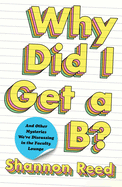
| Publisher: | Atria | |
| Genre: | Biography & Autobiography, School & Education, Education, Personal Memoirs, Topic, Essays, Humor | |
| ISBN: | 9781982136093 | |
| Pub Date: | June 2020 | |
| Price: | $26 |
| Education |
by Shannon Reed
In the opening pages of Shannon Reed's Why Did I Get a B?: And Other Mysteries We're Discussing in the Faculty Lounge, aspiring educators are offered a light-hearted quiz to assess their temperamental compatibility to teaching. This and other chucklesome pieces are among Reed's thoughtful essays reflecting on her 20-year "accidental, perfect career" in a profession that is demanding but offers rewards beyond measure.
Trained in theater, Reed's foray into education began with a reluctant stint as a preschool teacher. She tenderly recalls the specific moment when, during an outdoor lesson with her young students, she fell in love with her job and decided to make it into a career. Why Did I Get a B? is structured in three parts, reflecting the stages of Reed's professional life: preschool, high school and her current position as a writing professor at the University of Pittsburgh.
Confronting what make her chosen career an incredibly challenging one, Reed is also brutally honest about her limited world view when she joined the faculty of a small public high school in South Brooklyn. She eventually learned to see students for who they were as individuals instead of stereotypes based on their appearance, and she cultivated an important teaching skill: the ability to maintain authority without demanding unquestioning obedience.
With an irresistible combination of compassion, humor and engaged storytelling, Why Did I Get a B? is an invaluable and entertaining resource for readers curious about the pros and cons of a career in teaching. --Shahina Piyarali, writer and reviewer
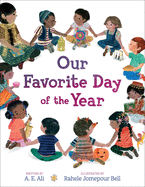
| Publisher: | Salaam Reads/Simon & Schuster | |
| Genre: | Friendship, Social Themes, Boys & Men, Juvenile Fiction, Diversity & Multicultural | |
| ISBN: | 9781481485630 | |
| Pub Date: | June 2020 | |
| Price: | $17.99 |
| Starred | Children's & Young Adult |
by A.E. Ali, illust. by Rahele Jomepour Bell
Gorgeously inviting illustrations and a joyful theme will likely make Our Favorite Day of the Year kindergarten classrooms' favorite book of the year.
Four boys--Musa, Moisés, Mo and Kevin--start kindergarten as strangers sitting at the same table, but by sharing their respective cultures, they become best friends. For show-and-tell throughout the year, students take turns telling their classmates about their favorite day of the year, including pronunciations, special foods and their familial or cultural traditions. At the end of every show-and-tell is the refrain: "Everyone could see why [the celebration] was [this boy's] favorite."
Illustrations by Iranian-born Rahele Jomepour Bell (Playdate by Maryann Macdonald), using digital brushes and scanned hand-printed textures, are a riot of color and patterns. Lush depictions of piñatas, challah, flowers, costumes and even a homemade baking soda volcano inspire long and careful perusal, while the happy faces of children bear out the idea that sharing differences can bring people together. Bell's illustrations also signal rich diversity among the friends. And a tapestry of images evoking cultural and spiritual symbols from around the world lines the endpapers.
Author A.E. Ali does an excellent job of having the children describe their favorite days in an accurate but developmentally appropriate way, with emphasis on the things young readers will be most interested in--food, presents, decorations, family togetherness. The comforting repeating pattern of children taking their turns in show-and-tell helps young readers anticipate what will come next. This lovely book is the consummate first day read for preschool or kindergarten. --Emilie Coulter, freelance writer and editor
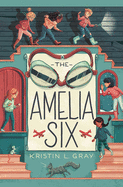
| Publisher: | Paula Wiseman/Simon & Schuster | |
| Genre: | Aviation, Transportation, Mysteries, Espionage, & Detective Stories, Girls & Women, Juvenile Fiction | |
| ISBN: | 9781534418851 | |
| Pub Date: | June 2020 | |
| Price: | $17.99 |
| Children's & Young Adult |
by Kristin L. Gray
In The Amelia Six, Kristin L. Gray's entertaining middle-grade novel, a group of STEM-loving girls earn a trip to the Amelia Earhart Birthplace Museum. What's in store for them recalls what happens to the five young candy freaks in Roald Dahl's Charlie and the Chocolate Factory: the protagonists are steadily assailed with rapturous wonders and nerve-jangling surprises.
The Amelia Six is narrated by Amelia "Millie" Ashford of Kansas City, one of the six middle-school girls selected for an overnight at Amelia Earhart's childhood home in Atchison, Kansas. The insecure Millie, whose "friends are either online or characters in books," has a challenge beyond the promised Earhart-themed scavenger hunt: fitting in.
The showpiece of the Earhart museum is the goggles that the aviator wore when she made her solo flight across the Atlantic Ocean in 1932; valued at $120,000, the specs are ultimately destined for the Smithsonian Air and Space Museum. When the goggles disappear from their display case, Millie--who had been caught ogling them by the housekeeper--becomes a suspect.
While The Amelia Six can read like a plug for STEM, Gray (Vilonia Beebe Takes Charge) never loses sight of the fact that her book is primarily a caper. Amelia delivers a mystery that will please readers who, like Millie, are into "vintage Nancy Drews" and their ilk. The haunted house-like museum has it all: a secret passageway, ghostly murmurs, an old painting of a sourpuss--all under cover of the requisite dark and stormy night. From this Millie emerges with something even more valuable than Earhart's goggles or Willie Wonka's chocolate factory: a sense of belonging. --Nell Beram, freelance writer and YA author